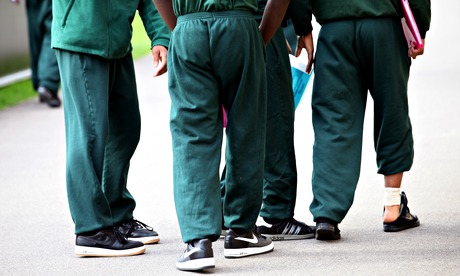
Traversing the emotional and physical minefields of adolescent sexuality is a challenge for every young person. For one group of youngsters in particular, it can be little short of a nightmare. This week, the commission on sex in prisons, an ongoing research project convened by the Howard League, has turned its attention to the experiences of child prisoners. Its briefing shines a light on some of the murkiest corners of our penal system and throws into sharp relief the urgent need for reform of our youth justice system.
About a thousand young people are held in prisons in England and Wales on any given day. Almost all are aged 15-17 and 95% are boys. A third have been in local authority care, one in five have emotional or mental health problems, one in three girls and one in 20 boys are known to have suffered sexual abuse, while more than a third have experienced other abuse or neglect.
While these numbers include a handful of extremely dangerous young people who have committed shocking crimes, most have found themselves incarcerated after a succession of minor offences – the average time served is less than three months. Typically, prison represents not the ultimate deterrent for hardcore young criminals, but one link in a chain of failures in social policy and social care.
Until now, few if any authorities had considered the impact upon healthy sexual development of incarcerating 200-300 children together at a key stage of their adolescence. While a flutter of consenting sexual experimentation is inevitable (though of course forbidden) the commission heard evidence that some boys had been punished by prison staff for masturbating, even though they thought they were masturbating in the privacy of their own cell.
As with adult prisoners, there is a scandalous shortage of information about the extent of sexual abuse in British children’s prisons. Neither the National Offender Management Service nor the Youth Justice Board (YJB) are willing or able to reveal the number of official complaints of sexual abuse in custody, or the number of investigations, criminal charges or convictions following an allegation. Research by the prisons inspectorate and the YJB in 2013 found that in the two largest prisons, 3% of inmates had been victimised by another child. Gay, bisexual or trans prisoners are not only at risk of extensive homophobic abuse and bullying, they are also much more likely to be sexually assaulted.
In the US, where some efforts are at least made to quantify the extent of sexual abuse in prisons, one in 10 incarcerated children report being sexually victimised in the past year. Of those, around three-quarters were abused not by fellow inmates, but by adult members of staff. If that statistic seems shocking, recall that more than 900 individuals have now approached police to report that they were sexually abused in just one institution, Medomsley detention centre in County Durham, throughout the 1970s and 1980s. As the commission notes, it would be complacent to imagine that some degree of child sexual abuse does not continue in penal institutions to this day.
There can be few environments less conducive to healthy sexual development than a children’s prison. Former inmates have poorer sexual health and are significantly more likely to participate in risky or harmful sexual practices. Most worryingly, the commission raises the possibility that imprisoning adolescents may significantly increase the probability that they will commit violent and abusive sexual offences in future. One study found that children who had been detained in secure custody were significantly more likely to go on to commit sexual and violent offences in later life than those who had served sentences in open institutions, irrespective of whether they had previously committed violent or sexual offences.
When confronted by the gruesome reality of life for some of society’s most vulnerable and damaged (not to mention violent and damaging) young people, there is a temptation to wring one’s hands and say: “Well, what can you do?”
In this case, the answer is clear and compelling. Where there is no alternative to custody for young people, it has repeatedly been shown that children are better protected, better educated, better rehabilitated and less likely to reoffend if they are housed in small units such as secure children’s homes, rather than large prisons.
In the short term it is more expensive, but financially, and on social and humanitarian grounds, there are significant savings in the long term by averting future offending.
Nonetheless, for reasons that defy all evidence and logic, the government seems committed not only to retaining large children’s prisons, but to building the biggest one yet – the so-called children’s super-prison at Glen Parva, Leicestershire, which will be able to hold 320 children, or nearly a third of the entire juvenile prison population on one site.
Bids are now being prepared to run the institution at the highest profit margin to private corporations and the lowest cost to taxpayers. The real price, however, will be paid in the physical, psychological and sexual health of the young people who will pass through its doors.

